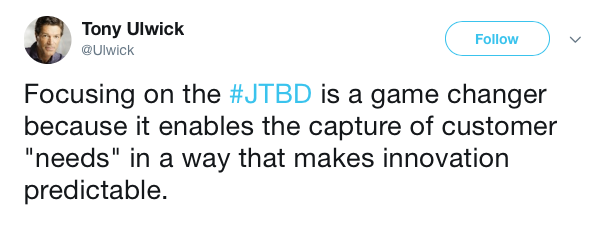
Innovation is not a tame practice

Are we trying to tame innovation — rushing into the error Rick Nason identifies of trying to use a “complicated solution” to solve a complex problem? It seems many are.
Nason points out this is a very common error in business. After all much business school training is based on reductionist assumptions – that problems can best be solved when broken into parts which are solved separately, often solved with 10 step processes or by filling out “a canvas” and all based on an assumption that this must be the best way to solve them.
Yet while reduction works well for many problems, it backfires when applied to problems that are truly complex – like innovation.
Innovation, Bureaucracy, and Executives. Consider some of the things said by two very prominent “innovation gurus” (Christensen and Ulwick). In a Harvard Business Review article from 2014, Christensen and his co-authors suggest it’s very positive that:
“…firms have established structured, disciplined innovation processes and brought in highly skilled talent to run them. Most firms carefully calculate and mitigate innovations’ risks”
Those sentences should scare you – attempting to make innovation fit neatly inside bureaucracy. Then, today, I picked up the following Tweet from Ulwick:

He also has a recent article he’s promoting on the same topic – how to achieve “predictable innovation”.
Predictable innovation? Innovation through bureaucracy? What I’ve observed in Ulwick’s case studies is his process appears to make things predictable because it won’t ever find those higher risk innovations that would also drive far higher returns.
INNOVATION IS NOT A TAME DISCIPLINE. Predictability must not be a primary goal for innovation or the end result can lead no further than incremental change. And while incremental change is important, it’s not what people are seeking when they look for the dramatic power available through innovation.
In fact, innovation does not submit well to processes and structure. It does not comfortably obey the rules of mitigating risks – at least when seeking innovations like those featured in Christensen’s books looking back at great innovations.
Christensen’s writing about case studies of innovation is generally superb – he tells excellent stories about the vagaries of human motivation and the discoveries that lead to success. But it’s also my sense that most of the insights in his stories would not have been found through his recommended jobs solution.
Innovation requires dedication and thoroughness. But it also requires instinct, risk taking, complexity thinking (NOT complicated thinking), and fundamental understanding of human vagaries…
Yet Managers, Directors, and VPs want believe they can remove risk from innovation. It’s easy to understand the pressures on them – and why they so quickly buy into promises to remove those risks. What they miss is that accepting a promise that innovation can be tamed is incredibly dangerous.
Innovation cannot be made low risk without also making it low return.
The Fight Against Genius. In his book, “The Organization Man“, William H. Whyte dedicates one complete chapter to “The Fight against Genius” and two additional chapters on how bureaucracies try to control genius and make it predictable. On pages 208/209 he writes:
“To the managers and engineers who set the dominant tone in industry, purposelessness is anathema, and all their impulses incline them to highly planned, systematized development in which the problem is clearly defined…. In pure research, however, half the trick is in finding out that there is a problem — that there is something to explain. The culture dish remained sterile when it shouldn’t have…. Something has happened and you don’t know why it happened — or if you did, what earthly use it would be?
“By its very nature, discovery has an accidental quality. Methodical as one can be in following up a question, the all-important question itself is likely to be a sort of chance distraction of the work at hand. At this moment, you neither know what practical use the question could lead to nor should you worry the point. There will be time enough later for that; and in retrospect it will be easy to show how well planned and systematized the discovery was all along.”
Whyte is, of course, talking more literally of scientific discovery than sorting out a new value you can deliver to customers. But it is my experience the buyer/consumer process is very much the same. We listen and watch and keep on working. “Discovery has an accidental quality” also describes finding the market keys for innovation.
Many “innovation” processes might have useful bits – but not for creating powerful “innovations”. In the world of software, apps, and technology the JTBD approach is well loved. And speaking with people who use it there – it’s well loved as a way to guide the constant pressure for incremental improvements.
At times, people rise above the limitations of approaches through their own excellence. Those people create some damn fine products – but those products may arise perhaps because of a process like JTBD or perhaps despite it.
So here’s the bottom line: Stop trying to tame innovation. Corporations cannot succeed by implementing complicated processes designed to make innovation safe. Instead, they must make room for the wildness and risk that are inherently part of innovation.
They need to accept that powerful innovation has an accidental quality – the key is creating a situation where the accident can be recognized and capitalized upon. Bureaucracies tend to hate accident – so that’s no easy challenge. But allowing innovation’s wildness and risk into your bureaucracy is the only way to build strong future demand – the real purpose of innovation.
And rather than digging deeply into new methodologies, let me suggest that innovators read poets like TS Eliot or Billy Collins instead of Christensen and Ulwick, read Rilke’s “Letters on Cezanne” rather than Porter’s “Competitive Strategy” and spend their weekends in the wilderness or art museum rather than in their offices.
Only by remaining open to the untamed accident can truly important innovation be found and brought to market.
Copyright 2018 – Doug Garnett – All Rights Reserved
Categories: Innovation, Methodology, Uncategorized

Posted: July 3, 2018 16:58
The Texture of Innovation | Doug Garnett's Blog
Posted: July 12, 2018 00:54
Disruption Fear Distracts from Innovation. The Innovator's Dilemma Re-visited. | Doug Garnett's Blog
Posted: September 25, 2018 18:51
Value and Risk of Marketing Science and Innovation Studies | Doug Garnett's Blog